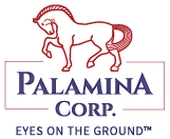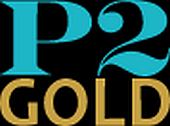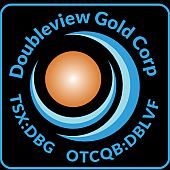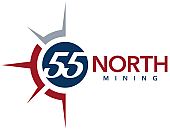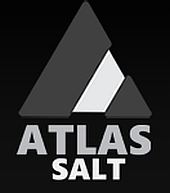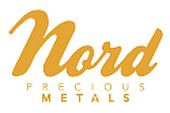 Kenorland drills 3.85 m of 44.95 g/t Au at Frotet
Kenorland drills 3.85 m of 44.95 g/t Au at Frotet
2022-06-13 12:11 ET – News Release
Mr. Zach Flood reports
KENORLAND INTERSECTS 44.95 G/T AU OVER 3.85M AT REGNAULT AND PROVIDES EXPLORATION UPDATE AT THE FROTET PROJECT
Kenorland Minerals Ltd. has released initial drill results from the 2022 winter drill program at the Frotet project, located in Northern Quebec and held under joint venture with Sumitomo Metal Mining Canada Ltd. (SMMCL). Assays from 20 of 25 drill holes completed, including 8,040 metres of the 10,880-metre program, are reported herein. The company has also provided an update on the recently announced summer drill program and exploration activities currently under way at the Frotet project.
Drill highlights include the following:
- 22RDD111: Two m at 20.43 grams per tone gold, including 0.70 m at 46.20 g/t Au at R4;
- 22RDD113: 2.25 m at 18.63 g/t Au, including 0.35 m at 72.90 g/t Au at R4;
- 22RDD121: 5.70 m at 8.10 g/t Au, including 2.30 m at 15.72 g/t Au at newly discovered vein;
- 22RDD124: Four m at 10.17 g/t Au, including 1.35 m at 25.99 g/t Au at R5;
- 22RDD130A: 3.85 m at 44.95 g/t Au, including 1.20 m at 127.83 g/t Au at R1.
Zach Flood, chief executive officer of Kenorland Minerals, states: “Initial results from the 2022 winter drill program at the Frotet project continue to demonstrate the scale and high-grade nature of the Regnault gold discovery. Most of the drilling this year, including the program currently under way, has been designed to aggressively step out and expand the mineralized footprint both along strike and at depth of the vein system. In addition to these stepouts, we have been drilling beyond the known veins which has led to the discovery of multiple subparallel mineralized structures, which are now also being followed up on with wide-spaced stepouts. So far, we are delighted with the success rate we are seeing at the drill bit and the impressive trajectory of this discovery.”
Discussion of results
The reported 20 drill oles (8,040 m) are the initial results from the 2022 winter drill program at Regnault. At the R2 and R4 trends, drilling was designed primarily to expand the strike extent of mineralized structures, while drilling at the R1 trend was testing the down-dip extents and exploring for additional mineralized structures immediately to the south.
Along the R4 trend, highlights include hole 22RDD111 which stepped 70 m east from 21RDD031 (2.70 m at 15.87 g/t Au*) and intersected two m at 20.43 g/t Au, including 0.7 m at 46.20 g/t Au. Hole 22RDD113, also on the R4 trend, stepped 100 m east from 20RDD004 (2.59 m at 9.89 g/t Au**) and intersected 2.25 m at 18.63 g/t Au, including 0.35 m at 72.9 g/t Au. The R4 trend was extended to a total of 200 m strike and 225 m down dip remaining open along strike and to depth.
At the R1 trend, hole 22RDD130A stepped 100 m down dip of 21RDD098 (0.33 m at 30.60 g/t Au***) and intersected 3.85 m at 44.95 g/t Au, including 1.20 m at 127.83 g/t Au. On the recently announced discovery and definition of the R5 structure, hole 22RDD124 stepped 125 m down dip of 21RDD110 (4.50 at 2.52 g/t Au***) and intersected four m at 10.17 g/t Au, including 1.35 m at 25.99 g/t Au. New vein intercepts interpreted to be subparallel to, and 100 m below, the R1/R5 structures were intersected by hole 22RDD121 returning 5.70 m at 8.10 g/t Au, including 2.30 m at 15.72 g/t Au. The discovery of these additional mineralized structures indicates the potential for further subparallel structures at depth in the Regnault system. These results along the R1 and R5 structures extend the known mineralization to depths of 400 m and 450 m below surface respectively, and remain open at depth.
(*See press release dated May 26, 2021. **See press release dated July 29, 2020. ***See press release dated March 28, 2002),
Gold mineralization along the R1 trend is associated with multiple east-west-trending and north-dipping shear zones. Mineralized structures transect both the multiphase Regnault intrusive complex and surrounding volcanic rocks, and are defined by zones of moderate-strong strain, biotite-calcite plus or minus silica-chlorite alteration and disseminated pyrite (locally ranging from 3 to 10 per cent). High-grade intercepts are characteristically shear-hosted laminated quartz-carbonate-pyrite veins, often haloed by variably deformed extensional stockwork quartz veining locally containing up to 20 per cent pyrite along with trace chalcopyrite, Au plus or minus Ag tellurides and visible gold.
Scott Smits, vice-president of exploration, states: “The success of the recent winter drill campaign is evident by the results we have obtained from the broad-spaced stepouts along our known mineralized trends. We have extended known high-grade mineralization along strike at R4, along strike and at depth along R1 and the recently defined R5 trend. We are continuing on this success with the ongoing summer drill program, demonstrating the potential for growing the mineralized footprint at Regnault, followed by the maiden drill program at our regional Cressida target to begin later in June.”
Prior to the announcement of the company’s summer 2022 drill campaign, a total of 45,086 m had been drilled at Regnault, including the initial discovery drill program in early 2020. Drilling is currently under way from the recently announced fiscal 2022 exploration budget (see press release dated May 3, 2022), which will include up to 40,000 metres of drilling carried out over two phases: a summer campaign from April to July of 2022, and a winter campaign from January to April of 2023.
 |
Regnault summer 2022 drill program update
The current continuing Regnault summer 2022 drill program is planned for approximately 12,000 metres with the intention to systematically step out along known mineralized structures and explore for additional subparallel structures to the south of the Regnault discovery area. Drilling completed to date has targeted broad-spaced stepouts along the R1, R5 and newly discovered mineralized structures (22RDD129) toward the east and at depth. Additional drill holes have tested the western extension along the R5 and newly discovered mineralized structures. Visual indications of shear-related mineralization, including quartz-sulphide veining, biotite-calcite alteration and disseminated pyrite, along with locally visible gold and tellurides, continue to be intercepted beyond the previous limits of drilling. Drilling has successfully extended R1 mineralization toward the east by greater than 100 m for a known strike length of 950 m and to depths of 400 m below surface, remaining open. The R5 and recently discovered veins have been traced along strike for 450 m and to depths of 500 m below surface, also remaining open along strike and at depth.
Frotet regional summer 2022 drill program update
Drill targeting is currently in progress following the recently completed ground induced polarization (IP) survey at the Company’s Cressida target. Approximately 2,500 metres of diamond drilling is planned for a first-pass drill program at Cressida, located within the northwestern portion of the 39,365-hectare property. The Cressida target is located directly along strike and within the main mineralized corridor hosting the former-producing Troilus gold mine, currently being explored by Troilus Gold Corp. The Cressida target is located between and along strike of Troilus Gold’s Southwest zone (2.5 kilometres to the northeast) and its recently discovered Beyan gold zone (three km to the southwest). Drilling at Cressida is expected to start late June and be completed by mid-July.
About the Frotet project
The Frotet project was first identified by Kenorland in 2017 after completing a regional prospectivity study over the Abitibi and Frotet-Evans greenstone belts of Quebec. The initial 55,921 ha property was acquired through map staking in March, 2017, and optioned to Sumitomo Metal Mining Canada, a wholly owned subsidiary of Sumitomo Metal Mining Co. Ltd., in April, 2018. Two years of property-wide systematic till sampling led to a maiden drill program in 2020 which resulted in a significant grassroots discovery at the prospect now named Regnault. The project is currently under the joint venture agreement between SMMCL and Kenorland Minerals, with interests being held at 80 per cent and 20 per cent, respectively. Under the joint venture, exploration is financed pro rata and Kenorland is presently the operator of the project. Any party which does not contribute and is diluted below a 10-per-cent interest, converts its interest to a 2-per-cent uncapped net smelter royalty.
Quality assurance/quality control and core sampling protocols
All drill core samples were collected under the supervision of Kenorland employees. Drill core was transported from the drill platform to the logging facility where it was logged, photographed and split by diamond saw prior to being sampled. Samples were then bagged, and blanks and certified reference materials were inserted at regular intervals. Groups of samples were placed in large bags, sealed with numbered tags in order to maintain a chain of custody, and transported from Chibougamau to BV laboratory in Timmins, Ont.
Sample preparation and analytical work for this drill program was carried out by Bureau Veritas Commodities (BV), Timmins, Ont. Samples were prepared for analysis according to BV method PRP70-250: individual samples were crushed to two millimetres (10 mesh) and a 250-gram split was pulverized to 75 micrometres (200 mesh) for analysis and then assayed for Gold. Gold in samples were analyzed using BV method FA430 where a 30-gram split is analyzed with fire assay by lead collection and atomic absorption spectroscopy finish. Overlimit gold samples were reanalyzed using BV method FA530 where a 30 g split is analyzed with fire assay by Pb collection and gravimetric finish. Multielement geochemical analysis (45 elements) was performed on all samples using BV method MA200 where a 0.25 g split is by multiacid digest with inductively coupled plasma mass spectrometry/emission spectroscopy finish. All results passed the QA/QC screening at the lab, all company inserted standards and blanks returned results that were within acceptable limits.
Qualified person
Jan Wozniewski, BSc, PGeo (EGBC No. 172781, OGQ No. 2239) is the qualified person under National Instrument 43-101, and has reviewed and approved the scientific and technical information in this press release.
About Kenorland Minerals Ltd.
Kenorland Minerals is a mineral exploration company incorporated under the laws of the Province of British Columbia and based in Vancouver, B.C, Canada. Kenorland’s focus is early to advanced-stage exploration in North America. The company currently holds four projects in Quebec where work is being completed under joint venture and earn-in agreement from third parties. The Frotet project is held under joint venture with Sumitomo Metal Mining Co., the Chicobi project is optioned to Sumitomo Metal Mining Co., the Chebistuan project is optioned to Newmont Corp. and the Hunter project is optioned to Centerra Gold Inc. In Ontario, the company holds the South Uchi project under an earn-in agreement with a wholly owned subsidiary of Barrick Gold Corp. In Alaska, United States, the company owns 100 per cent of the advanced-stage Tanacross porphyry copper-gold-molybdenum project as well as a 70-per-cent interest in the Healy project, held under joint venture with Newmont Corp.
We seek Safe Harbor.
https://kenorlandminerals.com/








